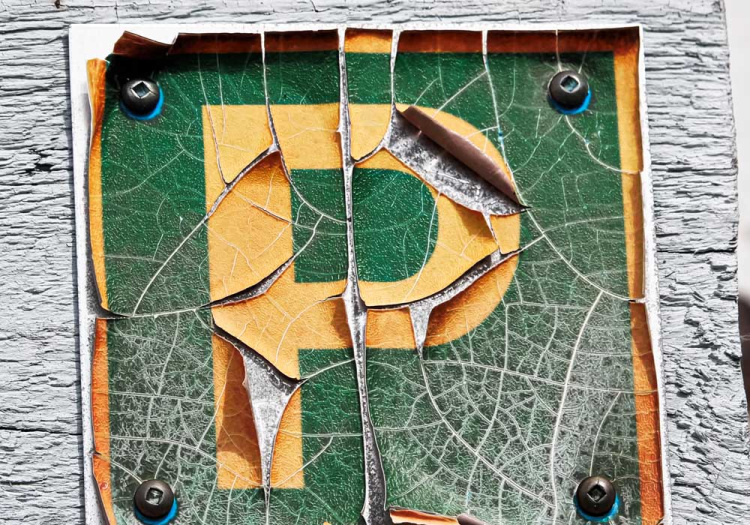
Listed in Highway Safety
Public works and highway departments across the United States are legally required to maintain traffic control devices that meet minimum standards for visibility, condition, and retroreflectivity. According to the Manual on Uniform Traffic Control Devices (MUTCD), every public agency must have a program in place to ensure that all signs remain legible and reflective at night. Failure to meet these standards can expose a municipality to serious liability if an accident occurs and a faded or missing sign is found to be a contributing factor.
Signs don’t last forever - sunlight, weather, and snowplow damage all take their toll. That’s why systematic sign inspections are critical. Not only do inspections ensure driver safety, they also provide defensible documentation proving that your department takes its maintenance responsibilities seriously. There are five generally recognized methodologies for assessing sign condition and retroreflectivity: Measured, Visual Nighttime Inspection, Expected Sign Life (Age-Based), Control Sign, and Blanket Replacement. Each has its strengths, limitations, and appropriate use cases.
Measured Method
The Measured or Instrument-Based method involves using a retroreflectometer to measure the actual light reflected from a sign’s surface. The result is compared against MUTCD-specified minimum values for that sign color and sheeting type.
Pros
-
Provides objective, quantifiable data.
-
Can detect subtle degradation not visible to the human eye.
-
Ideal for agencies needing defensible data for litigation or audit purposes.
Cons
-
Equipment is expensive (retroreflectometers can cost several thousand dollars).
-
Requires trained personnel and time to take readings for each sign.
-
Not practical for smaller agencies with limited staff.
Best For: Large municipalities or state DOTs with resources for specialized testing and data-driven asset management programs.
Visual Nighttime Inspection
This method relies on trained inspectors driving or walking routes at night to visually assess whether each sign is bright enough to be legible when illuminated by vehicle headlights.
Pros
-
Inexpensive and simple to implement.
-
Allows inspectors to observe other issues, such as visibility obstructions or vandalism.
-
Provides immediate feedback on how drivers actually perceive signs.
Cons
-
Subjective - depends on the inspector’s eyesight, experience, and environmental conditions.
-
Weather, moonlight, or vehicle headlights can influence perceived reflectivity.
-
Not as defensible in legal proceedings as measured data.
Best For: Small to mid-sized towns that want a low-cost, practical way to assess sign visibility while still meeting MUTCD requirements.
Expected Sign Life (Age-Based) Method - No Inspection
Under the Expected Sign Life method, the department replaces signs once they reach the end of their manufacturer-rated service life. For example, a Type III reflective sheeting may have a 12-year lifespan, so signs made from that material would be scheduled for replacement at that age.
Pros
-
Simple and predictable replacement schedule.
-
Minimal labor - no need for periodic reflectivity measurements.
-
Works well if installation dates are accurately recorded.
Cons
-
Requires reliable sign inventory with manufacture or installation dates.
-
Some signs may be replaced prematurely while others fade sooner than expected.
-
Doesn’t account for local conditions such as sun exposure or pollution.
Best For: Agencies with strong asset records but limited inspection staff, especially those already tracking sign installation dates in software like Roadwurx.
Control Sign Method
This method designates a small set of control signs-identical in material and age to the rest of the inventory-that are periodically checked for retroreflectivity. When the control signs fall below minimum reflectivity levels, the department replaces all similar signs.
Pros
-
Greatly reduces inspection workload.
-
Easy to plan replacements for large sign groups.
-
Works well in areas with uniform environmental conditions.
Cons
-
Control signs may not represent all locations accurately (for instance, south-facing signs fade faster).
-
Requires careful record-keeping and tagging to ensure accurate comparisons.
-
Replacement timing may not be optimal for every sign in the system.
Best For: Counties or agencies managing hundreds of signs with consistent materials and exposure conditions.
Blanket Replacement Method - No Inspection
Rather than inspecting individual signs, the Blanket Replacement approach replaces all signs within a defined area or route on a fixed cycle-say, every seven or ten years.
Pros
-
Simplifies planning and budgeting.
-
Ensures uniform retroreflectivity across regions.
-
Eliminates the need for inspection staff altogether.
Cons
-
Potentially wasteful-many signs could still be in good condition.
-
No record of actual sign performance over time.
-
Difficult to justify in the event of a claim if documentation is limited.
Best For: Smaller agencies or rural towns that prefer predictability and simplicity over detailed inspection programs.
Why Documentation Matters
Regardless of which method your department chooses, documentation is essential. A sign inspection program has little legal or operational value without dated records showing when each sign was checked and by whom. In the event of a lawsuit or insurance inquiry, your records become the proof that your agency fulfilled its MUTCD responsibilities.
That’s where Roadwurx comes in. Roadwurx makes it easy to record and store all your sign inspections - whether measured with a retroreflectometer, verified visually, or managed by replacement cycle. Each inspection record can include inspection method, retroreflectivity reading, pass/fail status, and photos, all linked to the specific sign location in your database.
By adopting a consistent inspection/replacement method and maintaining complete digital records, your department can reduce liability, improve road safety, and ensure every sign in your community continues to do its job-guiding drivers safely to their destinations, day and night.






